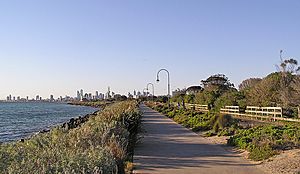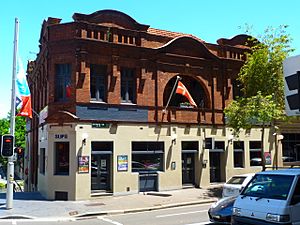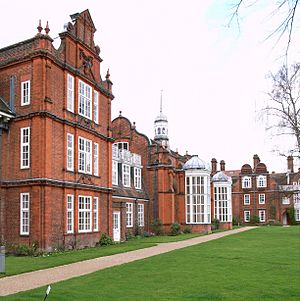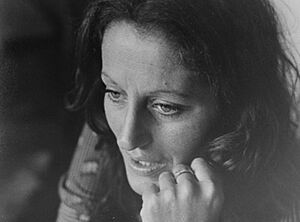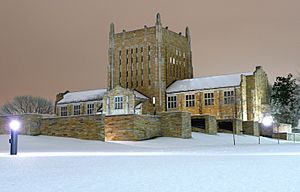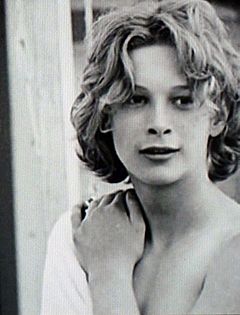Germaine Greer facts for kids
Quick facts for kids
Germaine Greer
|
|
|---|---|
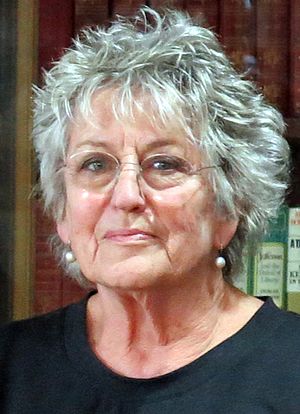
Greer at the University of Melbourne in 2013
|
|
| Born | 29 January 1939 |
| Education | |
| PhD thesis | The Ethic of Love and Marriage in Shakespeare's Early Comedies (1968) |
| Occupation | Writer |
| Years active | 1970–present |
| Era | Second-wave feminism |
|
Notable work
|
The Female Eunuch (1970) |
| Spouse(s) |
Paul du Feu
(m. 1968; div. 1973) |
Germaine Greer ( born 29 January 1939) is an Australian writer and feminist, regarded as one of the major voices of the second-wave feminism movement in the latter half of the 20th century.
Contents
Early life and education
Melbourne
Greer was born in Melbourne to a Catholic family, the elder of two girls followed by a boy. Her father called himself Eric Reginald ("Reg") Greer; he told her he had been born in South Africa, but she learned after his death that he was born Robert Hamilton King in Launceston, Tasmania. He and her mother, Margaret ("Peggy") May Lafrank, had married in March 1937; Reg converted to Catholicism before the wedding. Peggy was a milliner and Reg a newspaper-advertising salesman.
The family lived in the Melbourne suburb of Elwood, at first in a rented flat in Docker Street, near the beach, then in another rented flat on the Esplanade. In January 1942 Greer's father joined the Second Australian Imperial Force; after training with the Royal Australian Air Force, he worked on ciphers for the British Royal Air Force in Egypt and Malta. Greer attended St Columba's Catholic Primary School in Elwood from February 1943—the family was by then living at 57 Ormond Road, Elwood—followed by Sacred Heart Parish School, Sandringham, and Holy Redeemer School, Ripponlea.
In 1952 Greer won a scholarship to Star of the Sea College in Gardenvale, a convent school run by the Sisters of the Presentation of the Blessed Virgin Mary. Greer described her childhood as a "long remembered boredom", and has said it was her Catholic school that introduced her to art and music. That year, artwork by her was included in the under-14 section of the Children's Art Exhibition at Tye's Gallery, opened by Archbishop Mannix. Greer achieved the second highest exam results in the state. A year after leaving school, Greer left the Catholic faith, having found the nuns' arguments for the existence of God unconvincing. She left home when she was 18. She had a difficult relationship with her mother.
University
Melbourne and Sydney
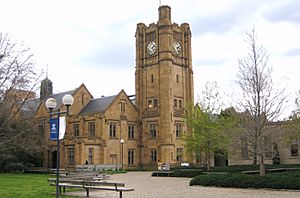
From 1956 Greer studied English and French language and literature at the University of Melbourne on a Teacher's College Scholarship, living at home for the first two years on an allowance of £8 a week.
Just before she graduated from Melbourne in 1959 with an upper second, she moved to Sydney.
Greer enrolled at the University of Sydney to study Byron. She became involved in acting at Sydney and played Mother Courage in Mother Courage and Her Children in August 1963. That year she was awarded a first-class MA for a thesis entitled "The Development of Byron's Satiric Mode", and took up an appointment at Sydney as senior tutor in English, with an office next door to Stephen Knight in the university's Carslaw Building.
Cambridge
The MA won Greer a Commonwealth Scholarship, with which she funded further studies at the University of Cambridge.
As soon as she arrived, Greer auditioned for the student acting company, the Footlights, in its club room in Falcon Yard above a Mac Fisheries shop. They performed a sketch in which he was Noël Coward and she was Gertrude Lawrence. Joining on the same day as James and Russell Davies, Greer was one of the first women to be admitted as a full member, along with Sheila Buhr and Hilary Walston. She did take part in its 1965 revue, My Girl Herbert, alongside Eric Idle (the Footlights president), John Cameron, Christie Davies and John Grillo.
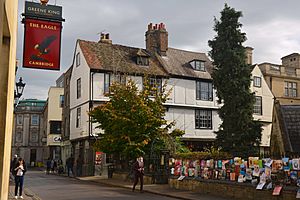
Greer, who speaks fluent Italian, finished her PhD in Calabria, Italy, where she stayed for three months in a village with no running water and no electricity. The trip had begun as a visit with a boyfriend, Emilio, but he ended the relationship so Greer changed her plans. Rising before dawn, she would wash herself at a well, drink black coffee and start typing. She was awarded her PhD in May 1968.
In 1986 Oxford University Press published her book Shakespeare as part of its Past Masters series, and in 2007 Bloomsbury published her study of Anne Hathaway, Shakespeare's Wife.
Career and writing
From 1968 to 1972, Greer worked as an assistant lecturer at the University of Warwick in Coventry, living at first in a rented bedsit in Leamington Spa with two cats and 300 tadpoles. In 1968 she was married for the first and only time, a marriage that ended in divorce in 1973.
In addition to teaching, Greer was trying to make a name for herself in television. In 1967 she appeared in the BBC shows Good Old Nocker and Twice a Fortnight and had a starring role in a short film, Darling, Do You Love Me (1968), by Martin Sharp and Bob Whitaker. From 1968 to 1969 she featured in a Granada Television slapstick show, Nice Time, with Kenny Everett, Sandra Gough and Jonathan Routh.
Greer then held academic position at Newnham College, Cambridge, and in the United States at the University of Tulsa. Based in the United Kingdom since 1964, she has divided her time since the 1990s between Queensland, Australia, and her home in Essex, England.
Greer's ideas have created controversy ever since her first book, The Female Eunuch (1970), made her a household name. An international bestseller, it offered a systematic deconstruction of ideas such as womanhood and femininity.
Greer's subsequent work has focused on literature, feminism and the environment. She has written over 20 books, The Change (1991), The Whole Woman (1999), and The Boy (2003). Her 2013 book, White Beech: The Rainforest Years, describes her efforts to restore an area of rainforest in the Numinbah Valley in Australia. In addition to her academic work and activism, she has been a prolific columnist for The Sunday Times, The Guardian, The Daily Telegraph, The Spectator, The Independent, and The Oldie, among others.
Greer is a liberation (or radical) rather than equality feminist.
Awards and honours
Greer has received several honorary doctorates: a Doctor of Letters from York University in 1999, a Doctor of Laws from the University of Melbourne in 2003, a Doctor of Letters at Anglia Ruskin University in 2003, and a Doctor of Letters from the University of Sydney in 2005.
The National Portrait Gallery in London has purchased eight photographs of Greer, including by Bryan Wharton, Lord Snowdon and Polly Borland, and one painting by Paula Rego. She was selected as an Australian National Living Treasure in 1997, and in 2001 was inducted into the Victorian Honour Roll of Women. In 2011 she was one of four feminist "Australian legends" (along with Eva Cox, Elizabeth Evatt and Anne Summers) represented on Australian postage stamps. In the UK she was voted "Woman of the Year" in 1971, and in 2016 BBC Radio 4's Woman's Hour placed her fourth on its annual "Power List" of seven women who had the biggest impact on women's lives over the previous 70 years, alongside (in order) Margaret Thatcher, Helen Brook, Barbara Castle, Jayaben Desai, Bridget Jones, and Beyoncé.
Germaine Greer archive
Greer sold her archive in 2013 to the University of Melbourne. As of June 2018 it covers the period 1959–2010, filling 487 archive boxes on 82 metres of shelf space. The transfer of the archive (150 filing-cabinet drawers) from Greer's home in England began in July 2014; the university announced that it was raising A$3 million to fund the purchase, shipping, housing, cataloguing and digitising. Greer said that her receipt from the sale would be donated to her charity, Friends of Gondwana Rainforest.
Images for kids
-
Cave Creek, near Natural Bridge, Queensland
-
With Lewis Wolpert on Channel 4's After Dark, 1994
See also
 In Spanish: Germaine Greer para niños
In Spanish: Germaine Greer para niños


